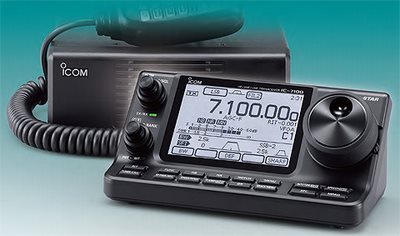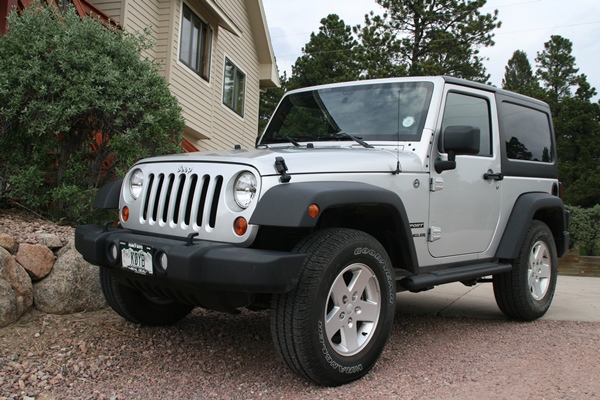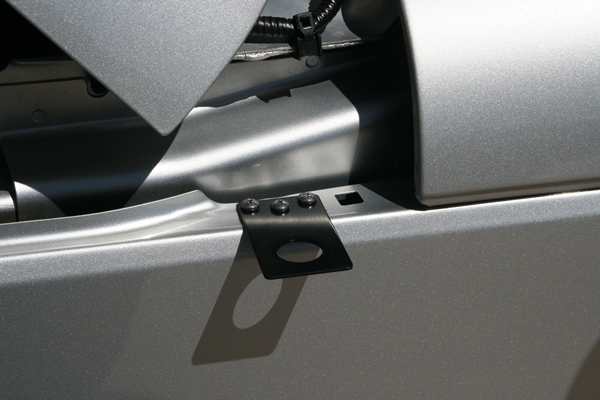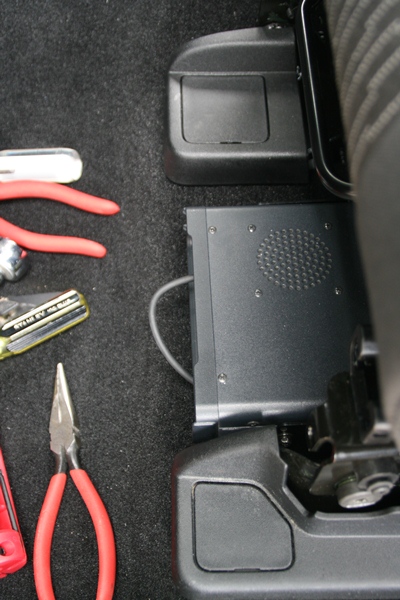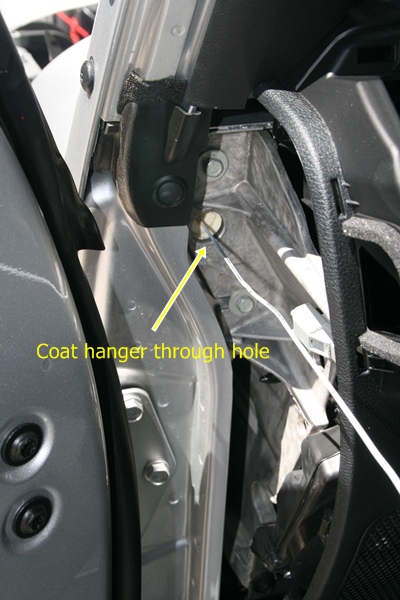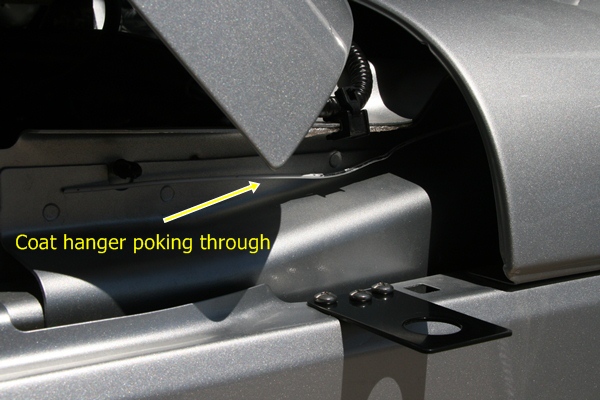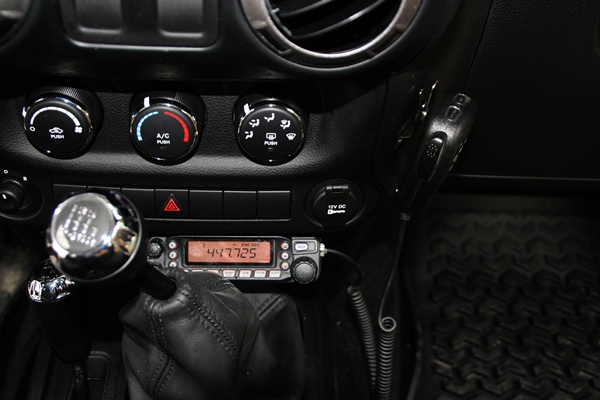Posts Tagged ‘Mobile’
 New Transceiver from ICOM: IC-7100
New Transceiver from ICOM: IC-7100
ICOM has shown the new IC-7100 at the JARL show in Tokyo. The interwebz is buzzing with information, including a preliminary data sheet.
My scan of the preliminary datasheet indicates that this radio is in the class of the IC-7000 or even the IC-706. It covers all modes on HF plus 6 Meters, 2 Meters and 70 cm. (It also has the 70 MHz band which is a nice add for the European countries that have that band.) The radio includes DV (D-STAR) modulation capability and has a new touchscreen user interface. The slanted control panel is meant to make the touchscreen more accessible.
A new HF plus VHF/UHF radio always gets my attention (see my plea for an FT-950 with 2 Meters). I am starting to think that the real benefit of this rig is the addition of D-STAR capability, which would a good but not essential feature to have.
What do you think?
73, Bob K0NR
Update (30 Aug 2012): Universal Radio has the radio on its website.
There’s a good video look at the radio here.
 TechDay 2012 – Your Start in Amateur Radio
TechDay 2012 – Your Start in Amateur Radio
 Come join us on Saturday, September 15th, 2012 (9:00 AM to 2:00 PM) at the Tri-Lakes Monument Fire Administration Complex at 166 Second St. in beautiful Monument, CO for a half day workshop aimed primarily at the new Technician Licensees to help them get started in ham radio. While you’re here you’ll learn what it takes to be a ham radio operator, brush up on your DXing skills, test your own ham radio equipment, check out some sweet mobile radio installations, and ask an Elmer “What’s so cool about 10 meters?”
Come join us on Saturday, September 15th, 2012 (9:00 AM to 2:00 PM) at the Tri-Lakes Monument Fire Administration Complex at 166 Second St. in beautiful Monument, CO for a half day workshop aimed primarily at the new Technician Licensees to help them get started in ham radio. While you’re here you’ll learn what it takes to be a ham radio operator, brush up on your DXing skills, test your own ham radio equipment, check out some sweet mobile radio installations, and ask an Elmer “What’s so cool about 10 meters?”
Getting started in ham radio has never been so much fun!
Presentations
9:30 am – Youth DXpedition to Costa Rica
by Anna Veal WØANT
10:30 am – Mountaintop Operating
by Steve Galchutt WGØAT
11:30 am – Home Station Setup
by Anna Veal WØANT
12:30 pm – Getting On the Air
by Brandon Hippe KDØPWF
1:30 pm – Radio Equipment 101
by Shel KFØUR
* Each presentation is approximately 15 minutes with 5 minutes of Q&A at the end. Events subject to change
Booths – Open 9AM to 2PM
Get Your Radio Programmed with Local Repeater Freqs by RT Systems
hosted by Kyle Hippe KYØHIP & Cole Turner WØCOL
Check Your Radio Performance
hosted by Bob Witte KØNR
See an HF Station
hosted by Dan Scott WØRO & Stu Turner WØSTU
Ask Any Question – The Elmer Booth
hosted by Paul Swanson AAØK & Shel KFØUR
Understand Mobile Installations
hosted by James Bucknall KDØMFO & Ethan Bucknall KDØMFP
Getting Your Ham Radio License
hosted by Brandon Hippe KDØPWF & Eric Hippe NØHIP
Ham Radio & Public Service
hosted by Randy Meadows KNØTPC
Sponsors
Tech Day 2012 is proudly sponsored by the WØTLM Amateur Radio Club and the Pikes Peak Radio Amateur Association.
Get the one page flyer in pdf format here.
Direct any questions to Bob KØNR
 On The Road Again
On The Road Again
When I left for Korea, I had to pull out the HF installation on my truck… as the truck was staying in Kansas and I was not. Pulling out the rig and tuner was easy. The Tarheel antenna was also fairly simple. A disconnect at the base and then I coiled up the feedline and the cable that powers the screwdriver so they would be mostly out of the elements.
I returned back to Kansas last June but did not reinstall my HF setup in the truck. My only real modification was swapping out my VHF/UHF antenna with a fold-over. The new house afords me the opportunity to park in the garage(!) but rather than unscrewing the antenna every time I enter the garage, now I just have to pull it down. Works great.
My assignment here in Kansas has me traveling quite a bit and this week I am headed up to Wisconsin. I have only driven through Wisconsin once so instead of flying, I am going to make the 9 hour drive. This had me thinking that if I am on the road for 9 hours, I need my HF rig. So today I put the radio back in and reattached the Tarheel antenna.
Everything was set – I fired up the rig and heard the Turbo Tunner beep that it was on and ready. I hit the 706′s tuner button but the screwdriver failed to turn. Troubleshooting time. I took the base of the antenna down to the bench. Then I dug out the original rocker switch that came with the Tarheel. I hooked it up to the bench power supply and then hit the switch. Nothing. After a bit of jiggeling and wiggeling, the screwdriver engaged. I guess the almost two year siesta had taken a bit of a toll.
After a test drive today, it appears as if the mobile HF rig is working FB!… one QSO with North Carolina and another with Massachusetts. So look for me (AD7MI-9) as I make my way to Fort McCoy, Wisconsin and maybe I will catch you on 20M.
 Jeep Wrangler Radio Install
Jeep Wrangler Radio Install
We recently sold the old white Jeep and bought a 2012 Wrangler (JK). After quite a bit of researching and experimenting with antenna mounting options, I finally got the ham gear installed in it. My objective is to get 2 Meter and 70 cm FM capability into the vehicle, using the Yaesu FT-7800 that I pulled out of the old Jeep. The big question was what to do about the antenna. The fiberglass hardtop does not make for a good antenna ground plane. Even if it did, during the summer months, we’ll sometimes take the top off to enjoy the open air ride.
Initially, I planned to use the Arizona Rocky Road NMO antenna mount with a Diamond dualband antenna that is a 1/2 wave on 2 Meters. The 1/2 wave does not need a ground plane, so the performance is usually better with irregular mounting structures. However, I found that this antenna combination did not clear my garage door. I don’t like to have to remove or tilt a vehicle antenna to get in/out of the garage — my experience is that it usually just gets left in the “down” position. I tried a shorter 19-inch dualband whip antenna but its performance was dismal due to these factors: lack of a ground plane, being blocked by the vehicle body and poor grounding on the spare tire carrier. By the way, the grounding issue on the tire carrier (and many other technical topics) are discussed in these online forums: WranglerForum, JK-Forum. I think the Arizona Rocky Road mount would have been my preferred way to go (with the longer Diamond antenna), except for the garage issue. One problem I ran into with that mount is that the standard NMO mounts I have (the basic mounts with the cable attached) did not handle the thick steel of the mount. I had to purchase special NMO mounts made to handle thicker metal (see TheAntennaFarm.com).
I abandoned the Arizona Rocky Road approach and decided to use a simple NMO mounting bracket (Laird SBTB3400) on the driver’s side hood. Like all Wrangler antenna installations, this is a compromise. It is lower on the vehicle than I would like but it does not block the driver’s view. Other people have used a variety of “trunk lip” mounts to accomplish the same thing but be sure to check out the driver’s view before installing. Installing the mount was easy, just three holes drilled and three sheet metal screws.
The next question was where to install the radio. I took advantage of the FT-7800′s detachable control head, mounting it on the dash, while placing the radio under the driver’s seat. I attached the radio’s mounting bracket to the floor of the Jeep with two heavy sheet metal screws. This keeps the radio up off the floor in case water gets into the Jeep. However, it only provides about 1 inch of water clearance, so you hard core Jeepers that are used to flooding the interior of the vehicle during stream crossings may find this inadequate.
I have to admit that I ran into a significant problem at this point. There was not enough clearance around the radio mounting bracket to get all four of the screws installed that attach the radio to the bracket. In the end, I unbolted the drivers seat and tilted it back, which gave me room to insert and tighten the screws. More careful positioning of the radio mount might have saved me from this hassle.
It is always a bit of an adventure to find a way to route the power cable from the engine compartment to the vehicle interior. Fortunately, Jeep has made this very easy, but it is not obvious just by looking around. Fortunately, the folks on the various online forums have scoped this out and provided good advice.
I popped off the small side panel of the dash on the driver’s side, to expose a hole filled with foam (see photos).
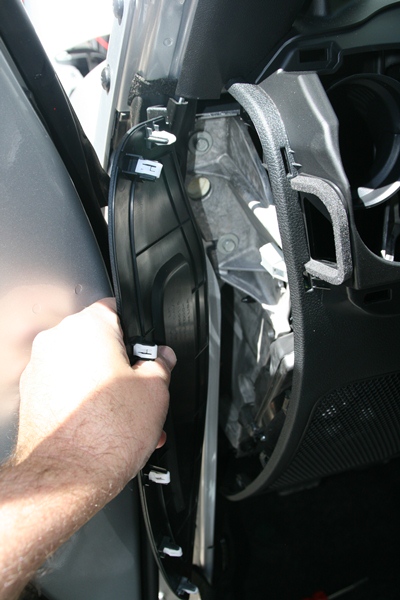
The plastic panel on the driver’s side of the dash pops open to reveal a routing hole filled with foam
A stiff wire or coat hanger can be poked into this hole and the foam easily gives way.
And the coat hanger comes out the other side, right next to the antenna mount.
I routed the power cable and the antenna cable through this hole. I connected the power cable directly to the battery, which is the recommended approach to avoid alternator whine and other problems. I understand there is a similar routing hole on the passenger side but I did not verify that.
The last thing to figure out was where to mount the control head. Although it is a tight fit, I mounted it in front of the gear shift. (I have the 6-speed manual transmission…the automatic transmission gives you more room here.) The control head is very light, so I used stick-on Velcro (about an inch wide and four inches long) to attach it to the dash. This seems to work OK but I will admit that the attachment is just a bit wobbly…fine for turning volume and VFO knobs but the not so good for pushing buttons. Also, I’ll have to see if it shakes lose on bumpy 4WD trails. If so, I’ll fabricate a small bracket to provide better attachment.
In the process of exploring, I did take the dash apart to figure out what my options were. In retrospect, it was probably unnecessary due to where I eventually mounted the radio and control head. I found this youtube video to be very helpful in dismantling the dash.
Initial checkout shows that the radio installation is working fine. I was pleasantly surprised that the antenna SWR was quite good (<1.5) over the bands of interest. I will use the short 19-inch whip most of the time but I can swap out other NMO mount antennas (including the Diamond dualband antenna I mentioned earlier.)
I appreciate all of the info out on the interwebz concerning JK radio installs and I am passing along what I learned to assist other folks with their Jeep installations.
- 73, Bob K0NR
Update 20 June 2012:
It turns out that the Velcro (hook-and-loop fastener) approach did not work. The Velcro attachment itself was pretty reliable but the stick-on adhesive failed after a few weeks. I used a couple of L-shaped brackets to attach the control head to the dash and it seems to be working fine. I have used Velcro successfully in past installations but in situations where the control head was positioned on top of the center console so the main purpose of the Velcro was to prevent horizontal movement. In other words, the Velcro did not have to support the entire weight of the control head, just keep it from moving around.
 Ham Radio Motorcycle Mobile [VIDEO]
Ham Radio Motorcycle Mobile [VIDEO]
A few months back I posted a story about getting a bicycle and looking up way to attach a radio to it to do some mobile work. While the summer has been busy and that project is on the side for the winter, I came across this video from KH1JH, of his Motorcycle mobile. Justin shows us how he mounted an HTX-202 from Radio Shack and is able to use it while on the road on his bike. A nice little setup if I do say so. Wish I could have a nice big hog to ride while doing 2 meters. That would be fun I bet! But I digress, here is Justin’s video. Enjoy!
73.
Rich also writes a Tech blog and posts stories every Tuesday and Thursday on Q103, Albany’s #1 Rock Station website, as well as Amateur Radio stories every Monday thru Friday on AmiZed Studios and hosts a podcast called The Kim & Rich Show with his fiance’ Kim Dunne.
 CQ to Add Digital Editions to All Publications
CQ to Add Digital Editions to All Publications
This is something pretty cool. CQ Communications, the publisher of CQ Amateur Radio (CQ magazine), CQ VHF, Popular Communications and WorldRadio Online will begin publishing electornic versions of their magazine starting this coming October.
Richard Ross, K2MGA, made the announcement a couple days ago and Editorial Director Rich Moseson, W2VU, explained how the digital editions would be supplimental and not replace the print versions. He said they would also have added features to the digital versions as well.
“Versions will be available for a variety of online and mobile platforms and will be hosted by Zinio, one of the top names in the e-magazine hosting business. This will assure that our magazines will always be able to take advantage of new technology when it becomes available.”
Some of the added features will be links to websites, as well as audio and photo albums as well as video and software. He also added that with the continuation of the print magazines, readers will still have the tactile experience we are all familiar with.
This is a good thing in my opinion. It’s melding the two worlds and laying the ground work for the next generation to discover this magazine. In 20 years, I predict that most publications will be digital, while print slowly fades from the foreground. I’m sure they will still make printed versions, but not as much. It’s also better for the environment.
According to the article over at Southgate’s website, “The digital launch will begin in late October with the November issue of an enhanced, multi-platform, version of WorldRadio Online, which will again become a paid-subscription publication; followed by November CQ, which, appropriately, is the magazine’s first annual Technology Special. The fall issue of CQ VHF and the December issue of Popular Communications will round out the introductions. Digital editions will be available by single copy and by subscription.”
No word though on pricing for digital versions though. I would suspect, it’ll be much cheaper compared with the print version.
73.
Rich also writes a Tech blog and posts stories every Tuesday and Thursday on Q103, Albany’s #1 Rock Station website, as well as Amateur Radio stories every Monday thru Friday on AmiZed Studios and hosts a podcast called The Kim & Rich Show with his fiance’ Kim Dunne.
 Bicycle mobile
Bicycle mobile
I’ve always been a bit of an armchair traveller, and also an armchair cyclist. I like to read accounts of people’s travels through foreign lands, particularly if they are travelling by bike. The slower pace and need to stop and talk to more people means that they are able to convey more of a feel for the place than you get from reading grossly overrated travel writers like Bill Bryson. So having just come across the blog of Raf, ON5RZ, who is currently cycling through the USA and Canada with an FT-817 and wire antennas, I have some reading to catch up on. Perhaps you’ll enjoy reading it, too.
